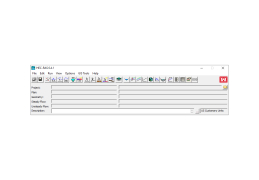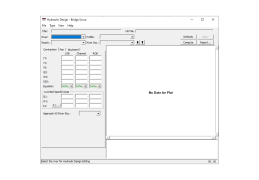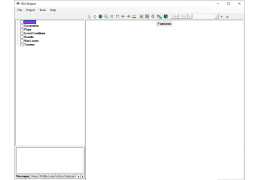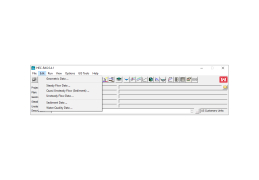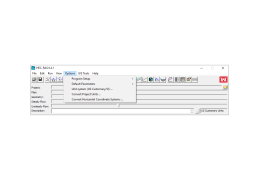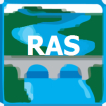
HEC-RAS
by Hydrologic Engineering Center (HEC)
HEC-RAS is a river analysis system that allows users to perform one-dimensional steady and unsteady flow calculations for a wide variety of hydraulic engineering applications.
Operating system: Windows
Publisher: Hydrologic Engineering Center (HEC)
Antivirus check: passed
HEC-RAS
HEC-RAS is a comprehensive hydraulic modeling software developed by the U.S. Army Corps of Engineers Hydrologic Engineering Center. It is a suite of programs for civil engineers and hydrologists to simulate the effects of open channel flow on natural and man-made waterways.
HEC-RAS offers a wide range of features for hydraulic modeling, including:
• Geometric Data Input: HEC-RAS allows users to define the geometry of waterways, including cross-sectional shapes, bank elevations, and bed elevations.
• Flow Input: HEC-RAS allows users to define the flow rate and direction of water in a channel.
• Hydraulic Structure Input: HEC-RAS allows users to define any hydraulic structures, such as culverts, weirs, and bridges, that may be present in a channel.
• Hydraulic Calculations: HEC-RAS can calculate important hydraulic parameters, such as water surface elevation, water depth, velocity, and energy grade line.
• Scour Analysis: HEC-RAS can perform scour analysis to determine the potential for the erosion of a channel bed.
• Floodplain Analysis: HEC-RAS can calculate floodplain inundation and flood depths.
• Bed Material Analysis: HEC-RAS can calculate bed material characteristics, such as bed shear stress, bed load transport, and sediment deposition.
• Flow Modeling: HEC-RAS can simulate the effects of open channel flow on a channel, such as floodplain inundation, sediment transport, and scour.
• Quality Assurance/Quality Control: HEC-RAS has numerous tools to ensure that model results are accurate, such as model verification and sensitivity analysis.
• Output: HEC-RAS can produce a variety of output formats, including tables, graphs, and GIS layers.
• Support: HEC-RAS has dedicated technical support staff to answer any questions and help with any issues that may arise.
HEC-RAS is a powerful and comprehensive hydraulic modeling software package. It has a wide range of features and tools that make it ideal for civil engineers and hydrologists who need to simulate the effects of open channel flow on waterways.
HEC-RAS is a comprehensive hydraulic modeling software developed by the U.S. Army Corps of Engineers Hydrologic Engineering Center. It is a suite of programs for civil engineers and hydrologists to simulate the effects of open channel flow on natural and man-made waterways.
HEC-RAS allows for efficient and accurate hydraulic analysis of river systems.Features:
HEC-RAS offers a wide range of features for hydraulic modeling, including:
• Geometric Data Input: HEC-RAS allows users to define the geometry of waterways, including cross-sectional shapes, bank elevations, and bed elevations.
• Flow Input: HEC-RAS allows users to define the flow rate and direction of water in a channel.
• Hydraulic Structure Input: HEC-RAS allows users to define any hydraulic structures, such as culverts, weirs, and bridges, that may be present in a channel.
• Hydraulic Calculations: HEC-RAS can calculate important hydraulic parameters, such as water surface elevation, water depth, velocity, and energy grade line.
• Scour Analysis: HEC-RAS can perform scour analysis to determine the potential for the erosion of a channel bed.
• Floodplain Analysis: HEC-RAS can calculate floodplain inundation and flood depths.
• Bed Material Analysis: HEC-RAS can calculate bed material characteristics, such as bed shear stress, bed load transport, and sediment deposition.
• Flow Modeling: HEC-RAS can simulate the effects of open channel flow on a channel, such as floodplain inundation, sediment transport, and scour.
• Quality Assurance/Quality Control: HEC-RAS has numerous tools to ensure that model results are accurate, such as model verification and sensitivity analysis.
• Output: HEC-RAS can produce a variety of output formats, including tables, graphs, and GIS layers.
• Support: HEC-RAS has dedicated technical support staff to answer any questions and help with any issues that may arise.
HEC-RAS is a powerful and comprehensive hydraulic modeling software package. It has a wide range of features and tools that make it ideal for civil engineers and hydrologists who need to simulate the effects of open channel flow on waterways.
The minimum hardware requirements for installing the HEC-RAS software are:
• Windows 10
• Intel Core i3 or equivalent processor
• 4 GB of RAM
• 8 GB of hard disk space
• Video card with at least 1280 x 1024 resolution
• Mouse or compatible pointing device
• Network adapter (optional)
The minimum software requirements for installing the HEC-RAS software are:
• Windows 10
• .NET Framework 4.6.2
• Microsoft Access Database Engine 2016 Redistributable
• Microsoft Excel 2007 or later
• Microsoft Visual C++ 2015
• Adobe Reader 8 or later for viewing help files
• Java Runtime Environment 8 or later for GIS support
• Windows 10
• Intel Core i3 or equivalent processor
• 4 GB of RAM
• 8 GB of hard disk space
• Video card with at least 1280 x 1024 resolution
• Mouse or compatible pointing device
• Network adapter (optional)
The minimum software requirements for installing the HEC-RAS software are:
• Windows 10
• .NET Framework 4.6.2
• Microsoft Access Database Engine 2016 Redistributable
• Microsoft Excel 2007 or later
• Microsoft Visual C++ 2015
• Adobe Reader 8 or later for viewing help files
• Java Runtime Environment 8 or later for GIS support
PROS
Supports one-dimensional and two-dimensional hydraulic modeling.
Provides comprehensive floodplain and river system analysis.
Useful for sediment transport computations.
Provides comprehensive floodplain and river system analysis.
Useful for sediment transport computations.
CONS
Has a steep learning curve for new users.
Limited in handling complex hydraulic situations.
Quite expensive for individual users or small firms.
Limited in handling complex hydraulic situations.
Quite expensive for individual users or small firms.
Matthew F*********k
HEC-RAS is a powerful software for hydraulic and river engineering analysis. It is a reliable program for simulating free-surface flows in natural channels and open channels. I have had experience in using this software for a range of projects. It is user friendly and has an intuitive graphical user interface. The help files and tutorials are comprehensive, making it easy to learn. It can also generate detailed reports. It is capable of producing accurate results if the correct inputs are provided. It is not the most economical option, but its accuracy and quality of output is worth the price. It is also fast and can process large datasets. Overall, this is a great software for engineers and scientists.


